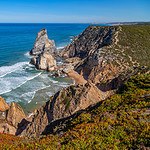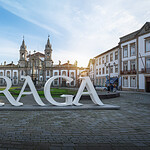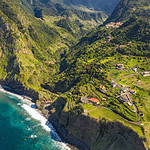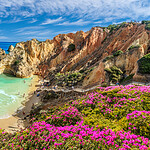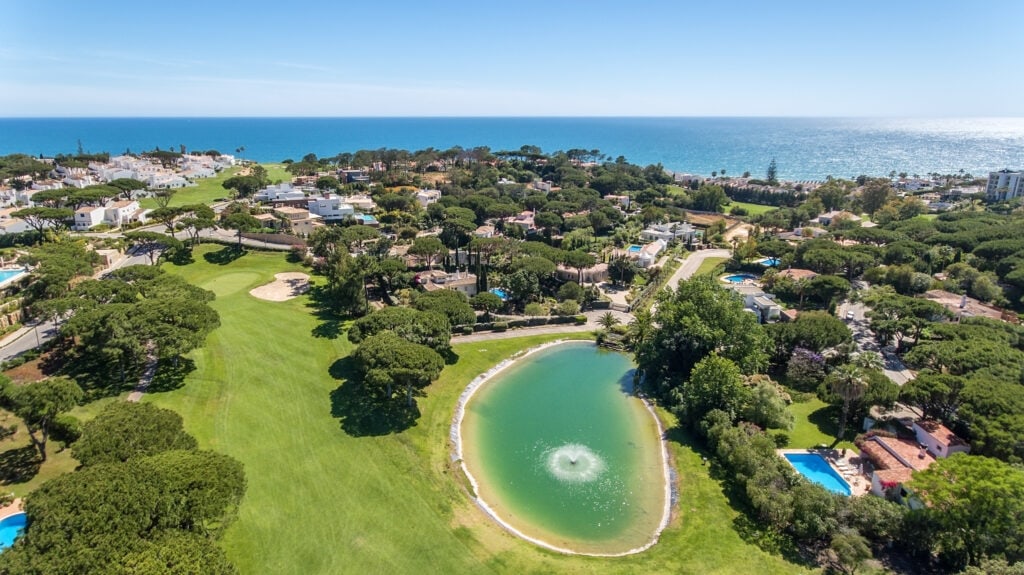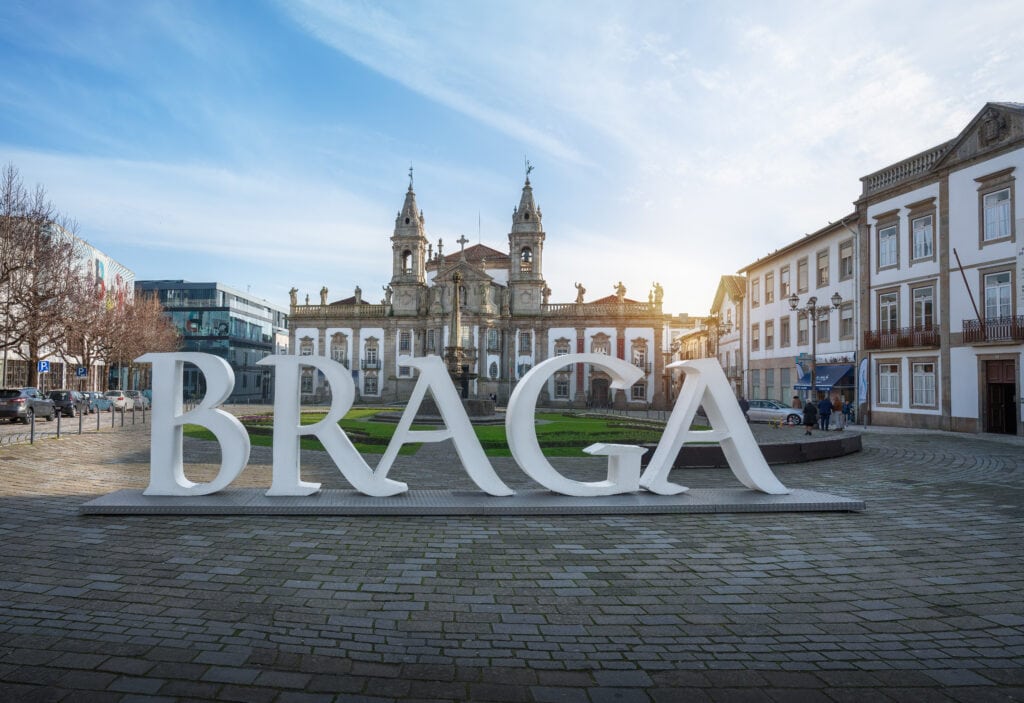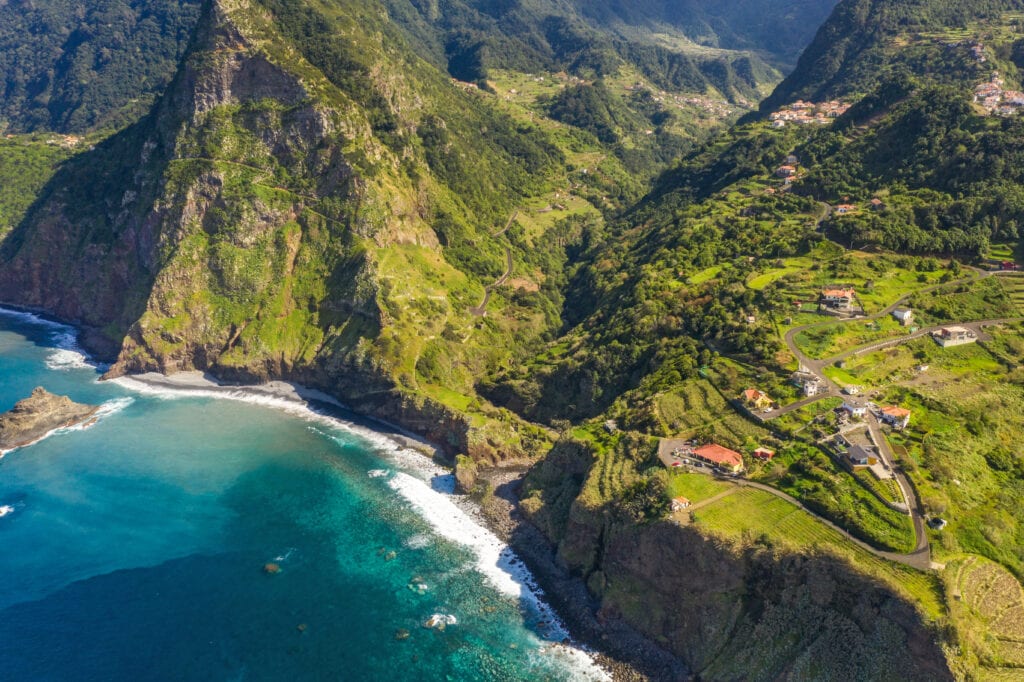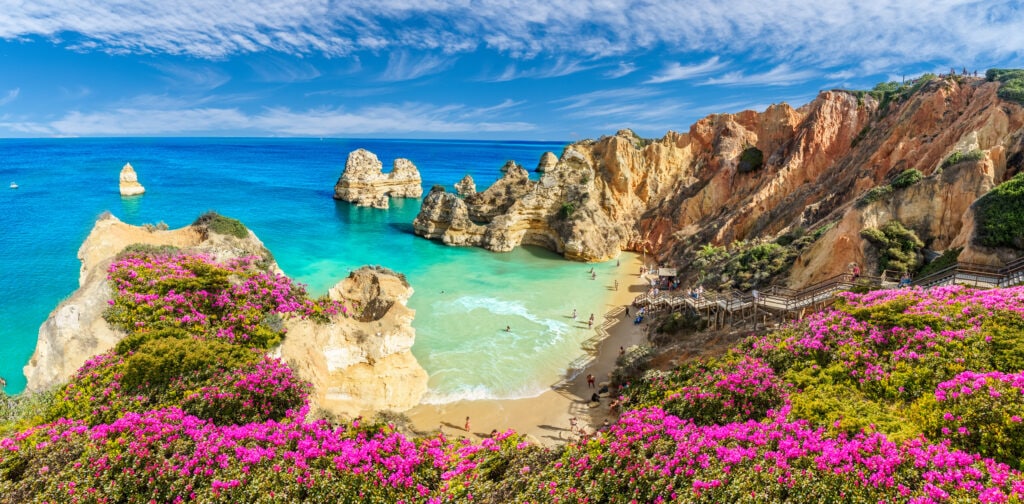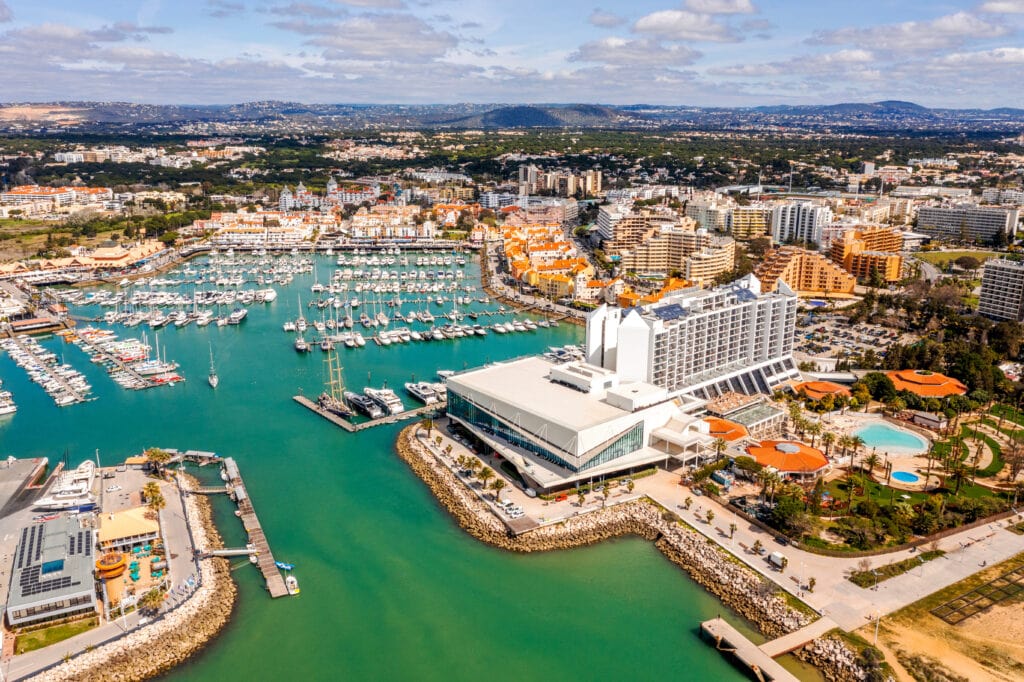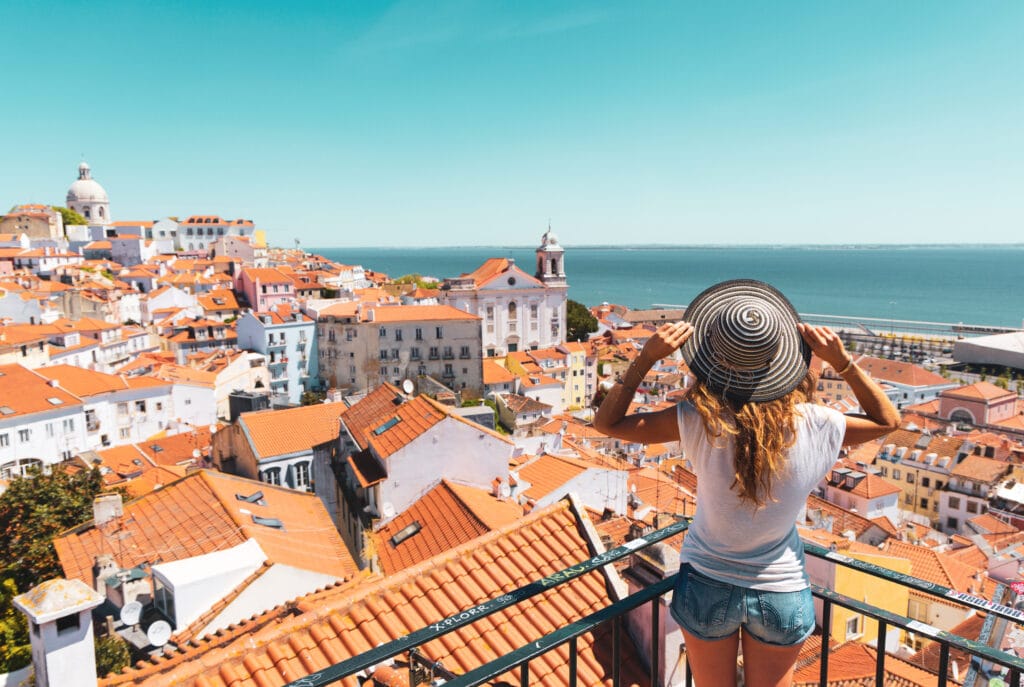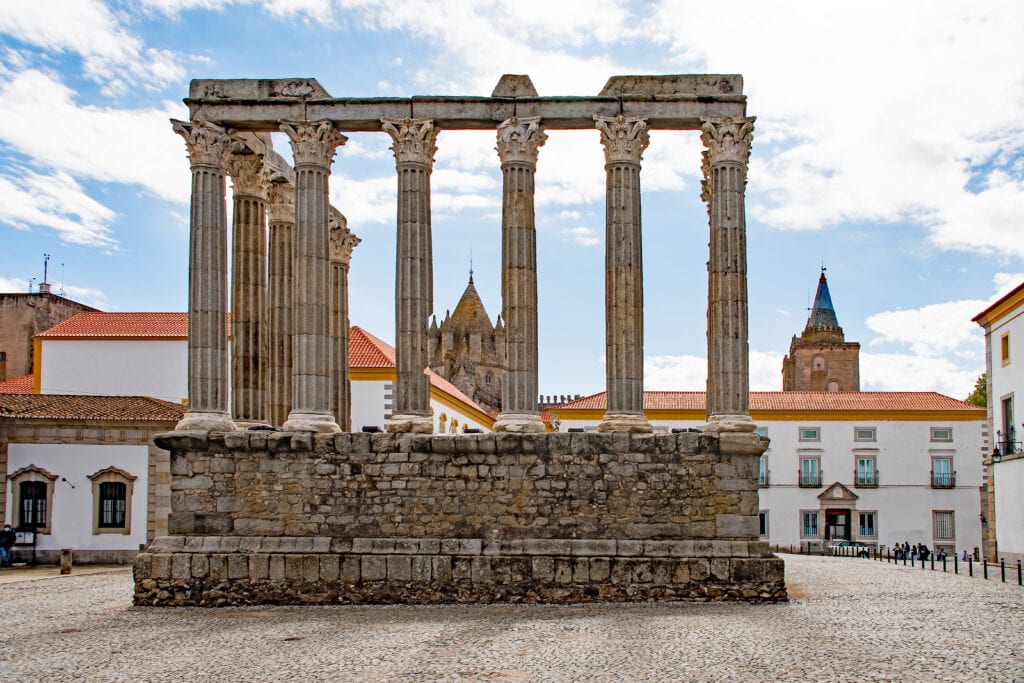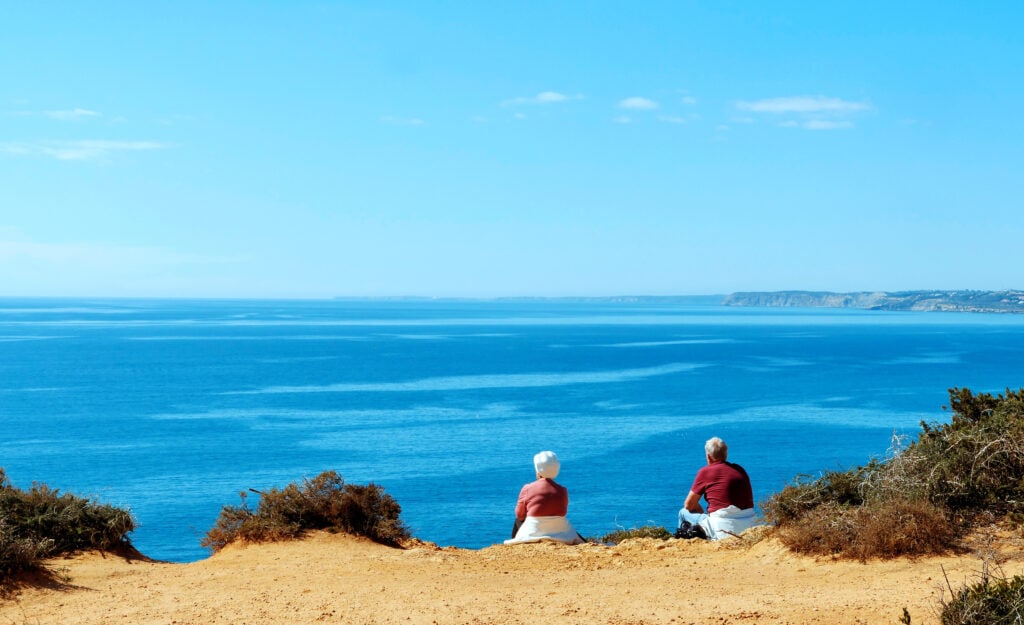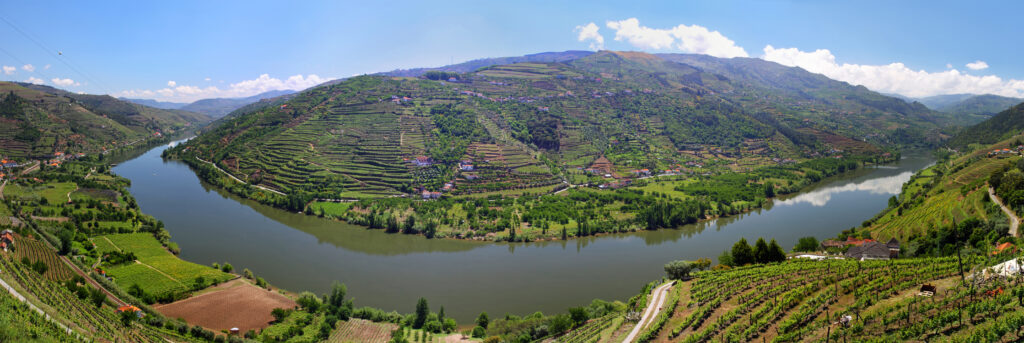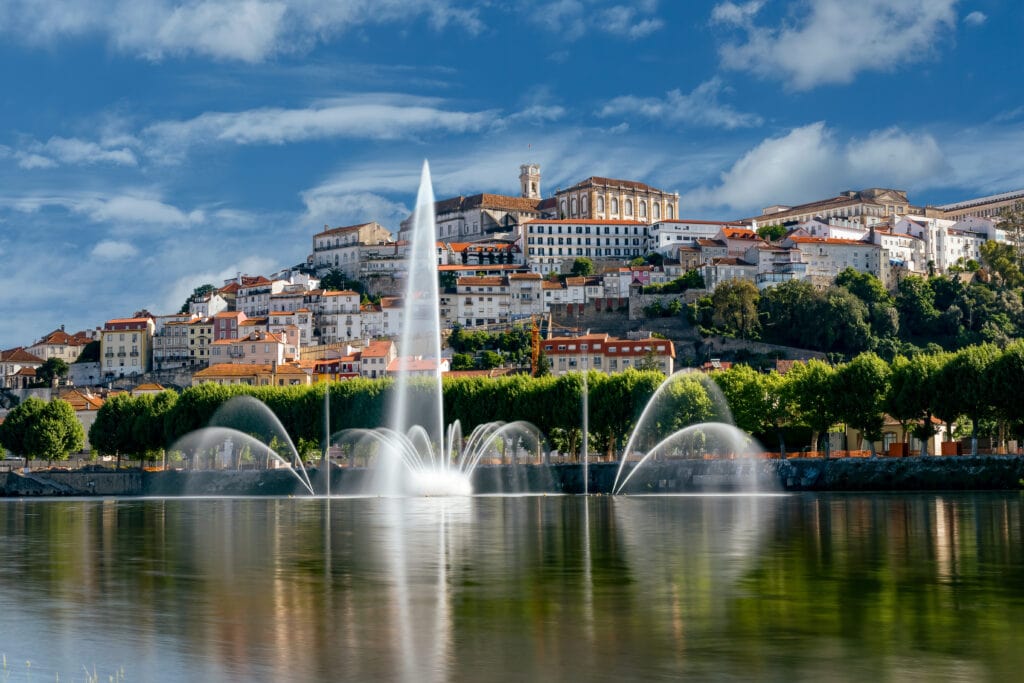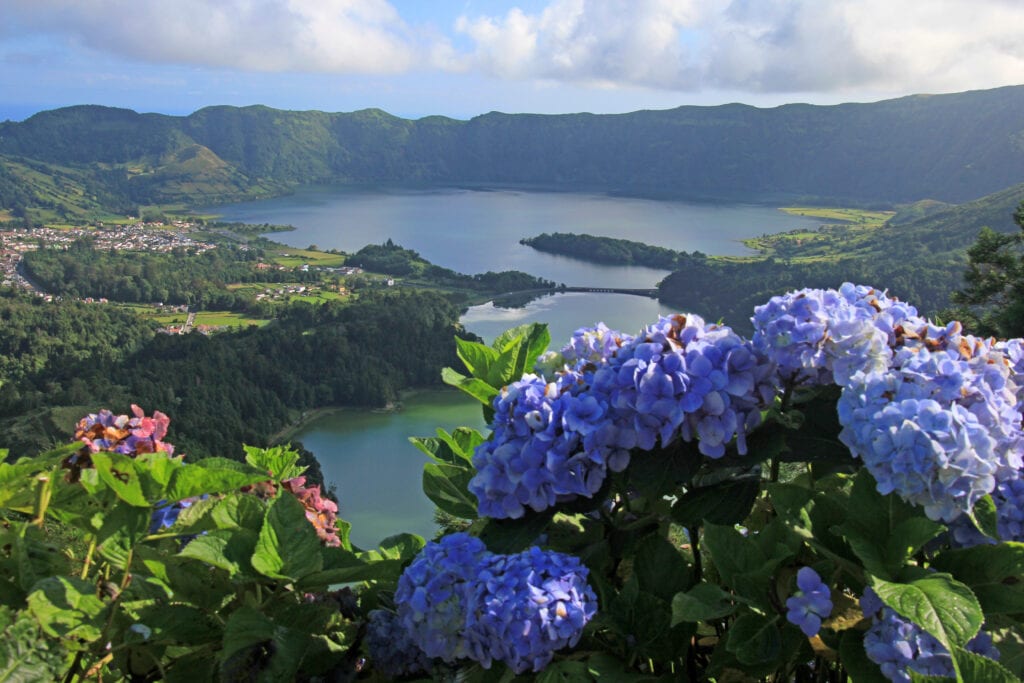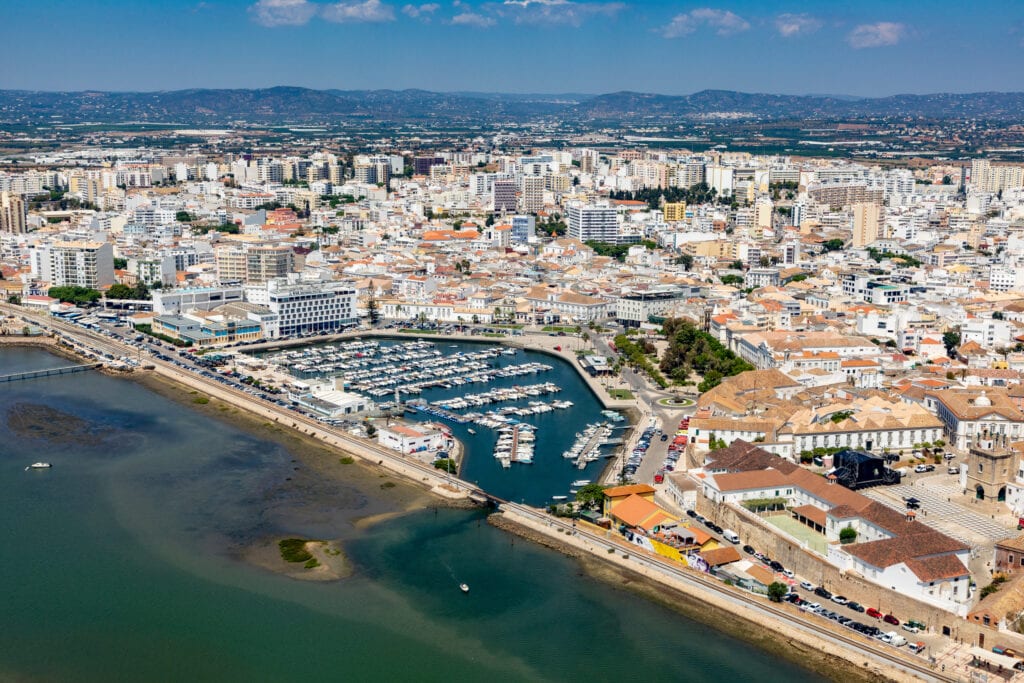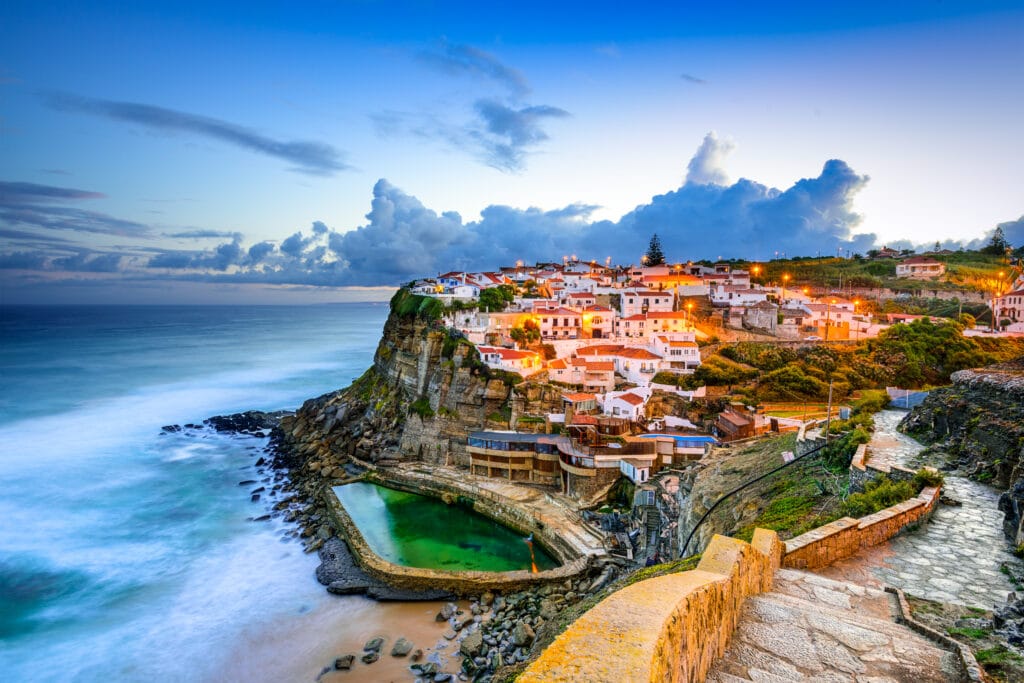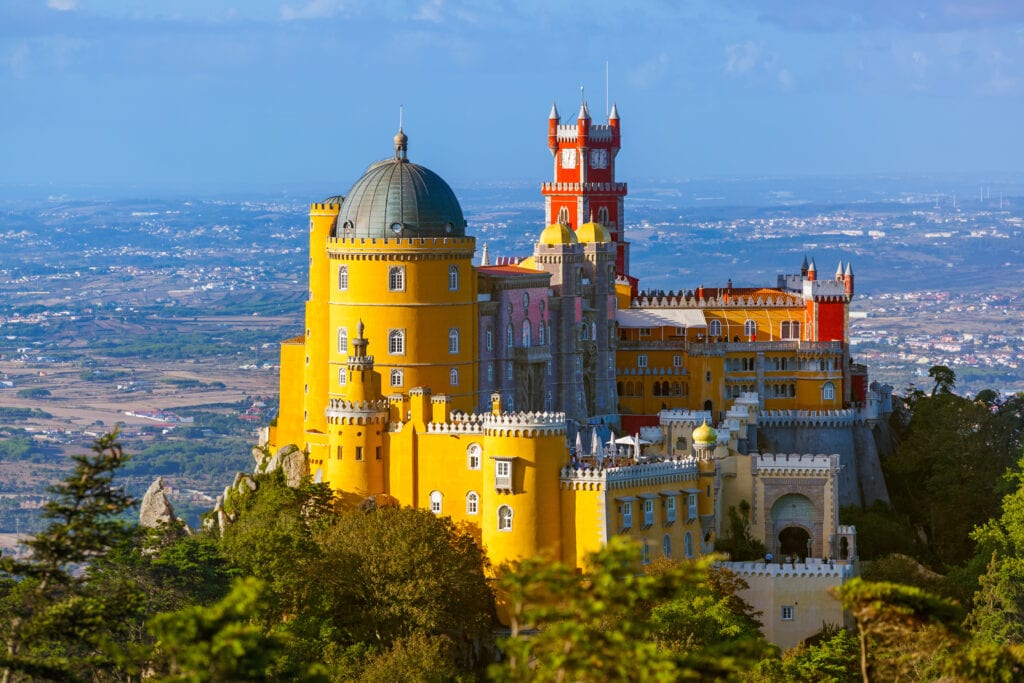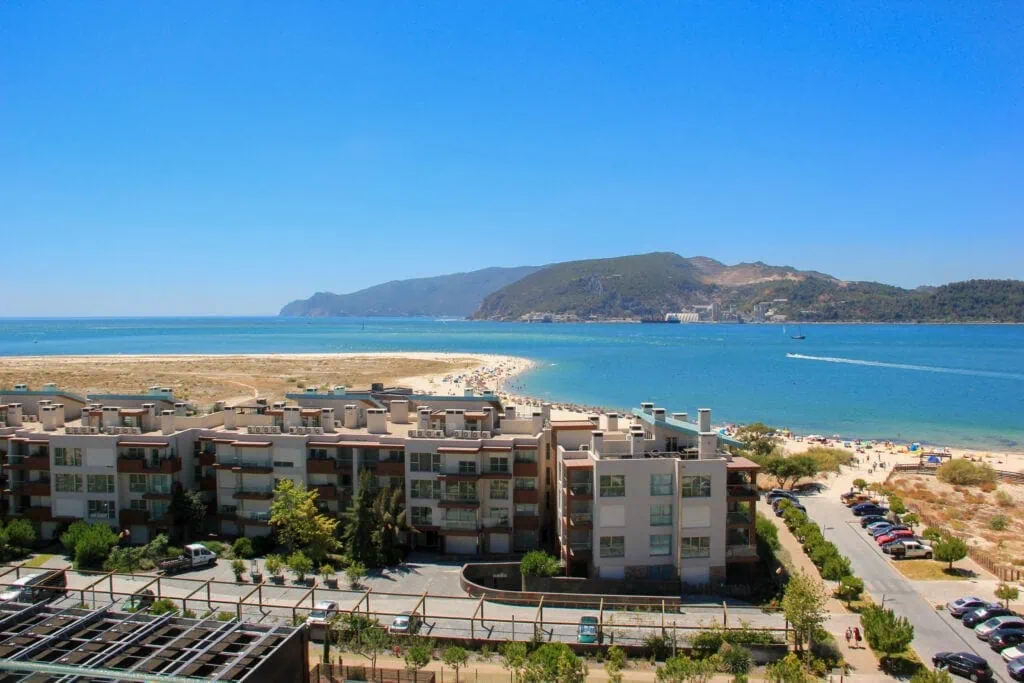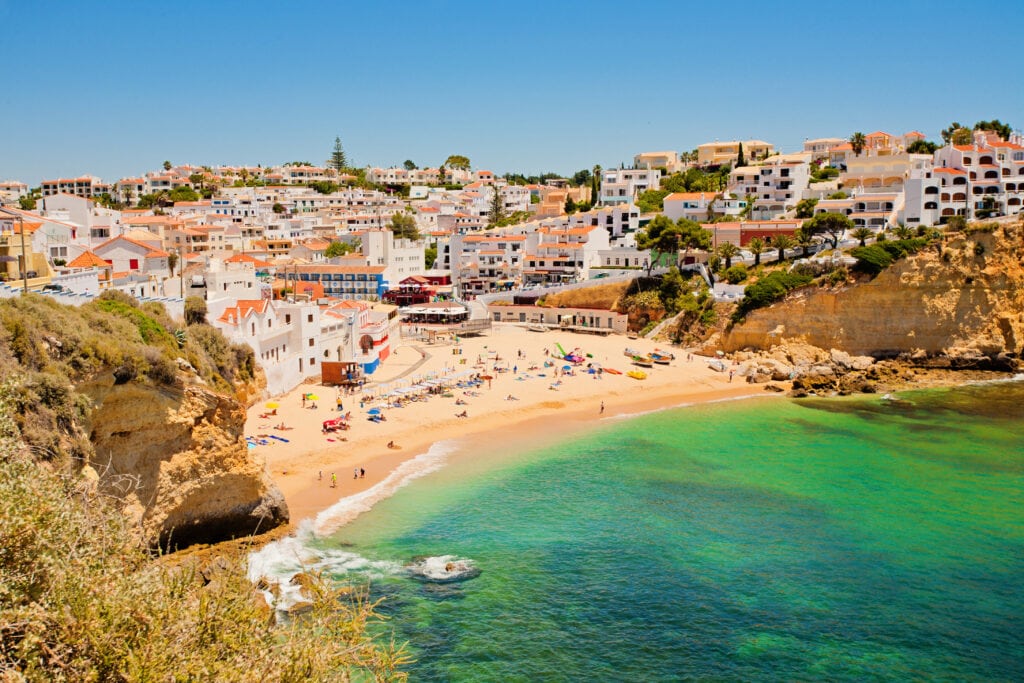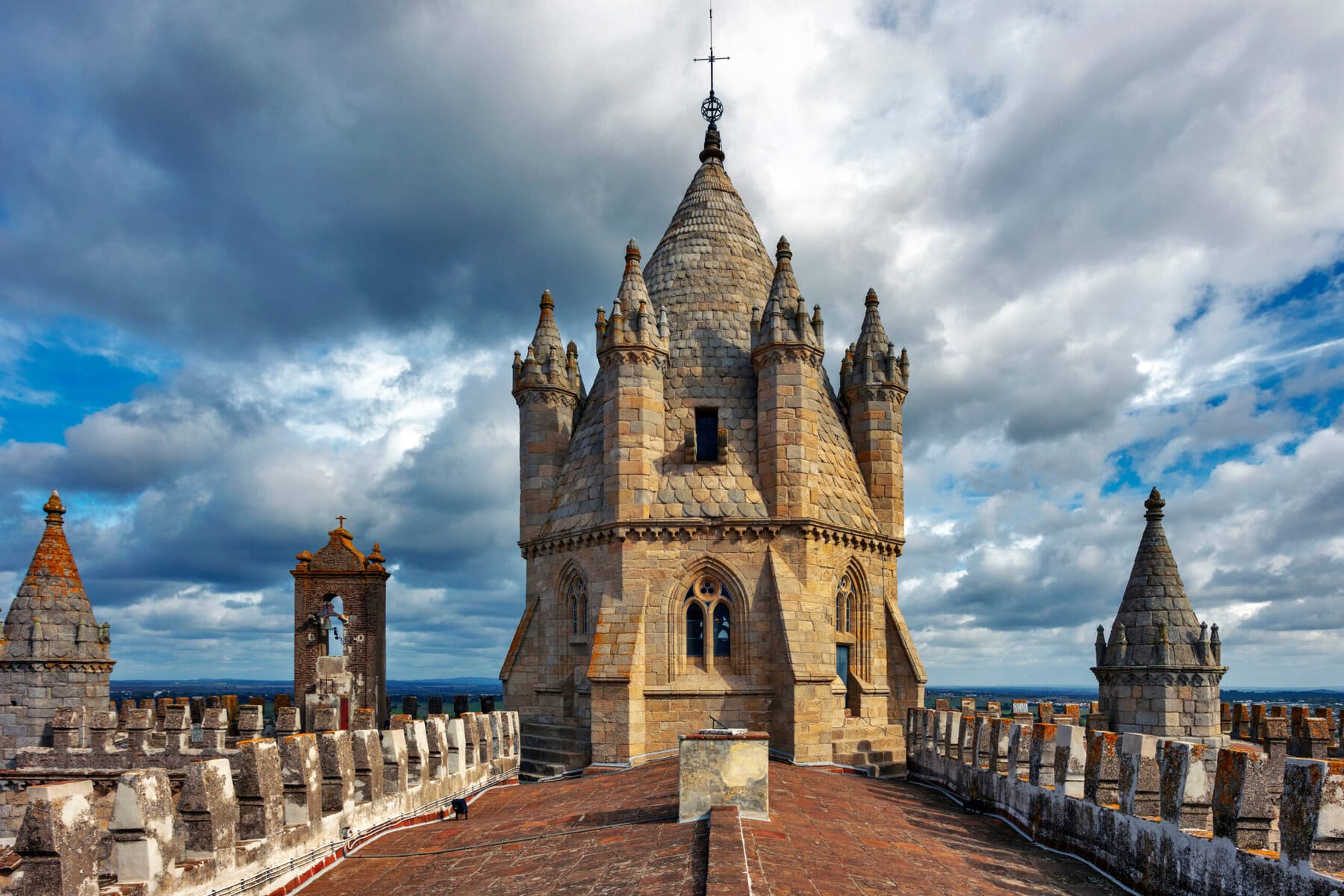Historical Evora: A UNESCO World Heritage Site for Travelers
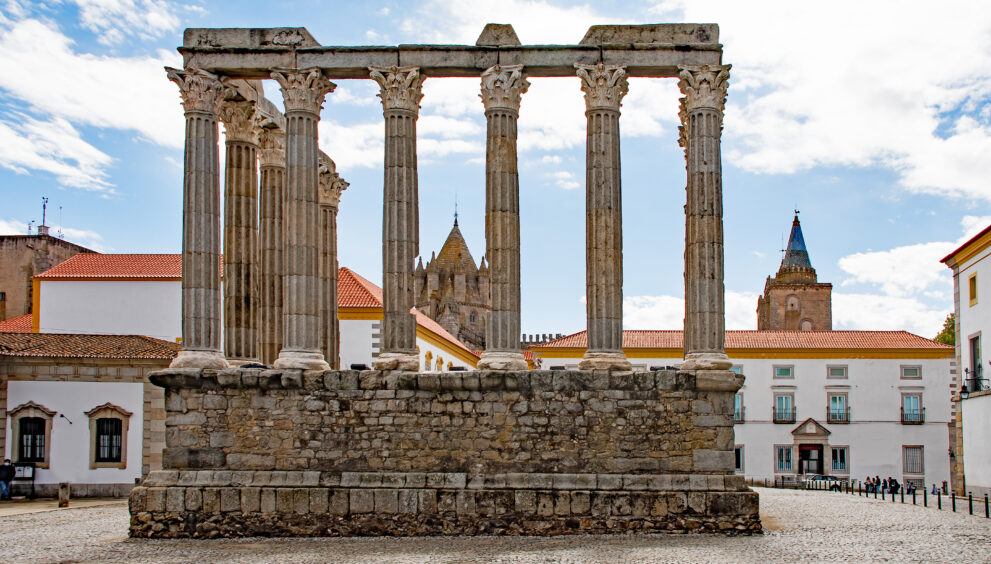
Evora, located in Portugal, is a captivating city that has been designated as a UNESCO World Heritage Site. Its rich cultural heritage and well-preserved historic center make it a must-visit destination for travelers seeking to immerse themselves in history and culture.
Key Takeaways:
- Evora, in Portugal, is a UNESCO World Heritage Site.
- The city’s well-preserved historic center is a treasure trove of cultural heritage.
- Evora offers a range of attractions, including ancient Roman ruins and medieval churches.
- Visitors can explore charming streets and discover hidden gems in the historic center.
- Evora serves as a base for day trips to nearby attractions, such as Elvas.
Exploring the Enchanting City of Evora
Evora offers a multitude of attractions and activities for visitors to explore. From its Roman temple and medieval cathedral to its charming streets and historic buildings, there is plenty to see and do in this enchanting city. A comprehensive travel guide can help visitors navigate the city and make the most of their visit.
When visiting Evora, it’s essential to have a well-rounded travel guide that provides valuable information about the city’s attractions, the best time to visit, and tips for exploring its hidden gems. A reliable guide will ensure that visitors don’t miss out on the must-see landmarks, unique experiences, and cultural treasures Evora has to offer.
Below is a list of some of the top attractions to explore in Evora:
- Roman Temple of Diana: A well-preserved Roman temple dating back to the 1st century AD, offering a glimpse into Evora’s ancient history.
- Evora Cathedral: A medieval cathedral with stunning Gothic and Romanesque architecture and a panoramic view of the city from its rooftop.
- Chapel of Bones: An eerie yet fascinating chapel within the São Francisco Church, adorned with the bones of approximately 5,000 individuals.
- Graça Church: A beautiful church showcasing a blend of Gothic and Manueline architectural styles, located in the historic center of Evora.
Whether strolling through the narrow cobbled streets of the historic center, admiring the architectural marvels, or indulging in the local cuisine and wine, Evora offers a unique and enchanting experience for every visitor.
| Evora Travel Guide | Evora Attractions | Evora Tourism |
|---|---|---|
| Roman Temple of Diana | Evora Cathedral | Chapel of Bones |
| Historic streets | Graça Church | Local cuisine |
| Medieval architecture | Wine tasting |
The Historical Significance of Evora
Evora has been recognized as a UNESCO World Heritage Site, affirming its historical significance. Dating back to the Roman era, the city has preserved its architectural and cultural heritage throughout the centuries. This designation is a testament to Evora’s importance in Portuguese history and its enduring influence on architecture in Brazil.
Must-See Landmarks in Evora
Evora, with its fascinating history, is home to several must-see landmarks that showcase the city’s rich cultural heritage. These iconic attractions offer visitors a glimpse into Evora’s past and are a testament to its historical significance.
Roman Temple of Diana
Located in the heart of Evora, the Roman Temple of Diana is one of the city’s most significant landmarks. This well-preserved Roman temple dates back to the 2nd century and is dedicated to the goddess Diana. Its impressive Corinthian columns evoke a sense of awe and admiration.
Medieval Cathedral
The medieval Cathedral of Evora, also known as the Cathedral of Our Lady of the Assumption, is a magnificent Gothic masterpiece. Its grandeur and architectural beauty make it a must-visit landmark in Evora. Visitors can explore its stunning interior and climb to the top of the tower for panoramic views of the city.
Chapel of Bones
Nestled within the São Francisco Church, the Chapel of Bones is a unique and somewhat macabre attraction. The chapel is adorned with the bones of thousands of monks, creating a haunting yet thought-provoking atmosphere. It serves as a reminder of the transient nature of life and encourages reflection on the inevitability of death.
Graça Church
The Graça Church, also known as the Church of Our Lady of Grace, is a beautiful example of Mannerist architecture. Its intricate façade and exquisite interior decoration make it a must-see landmark in Evora. The church is also home to a striking altarpiece and an impressive pipe organ.
| Landmark | Description |
|---|---|
| Roman Temple of Diana | A well-preserved Roman temple dedicated to the goddess Diana. |
| Medieval Cathedral | A magnificent Gothic cathedral with stunning views from the tower. |
| Chapel of Bones | A unique chapel adorned with the bones of monks. |
| Graça Church | A beautiful Mannerist church with intricate decoration. |
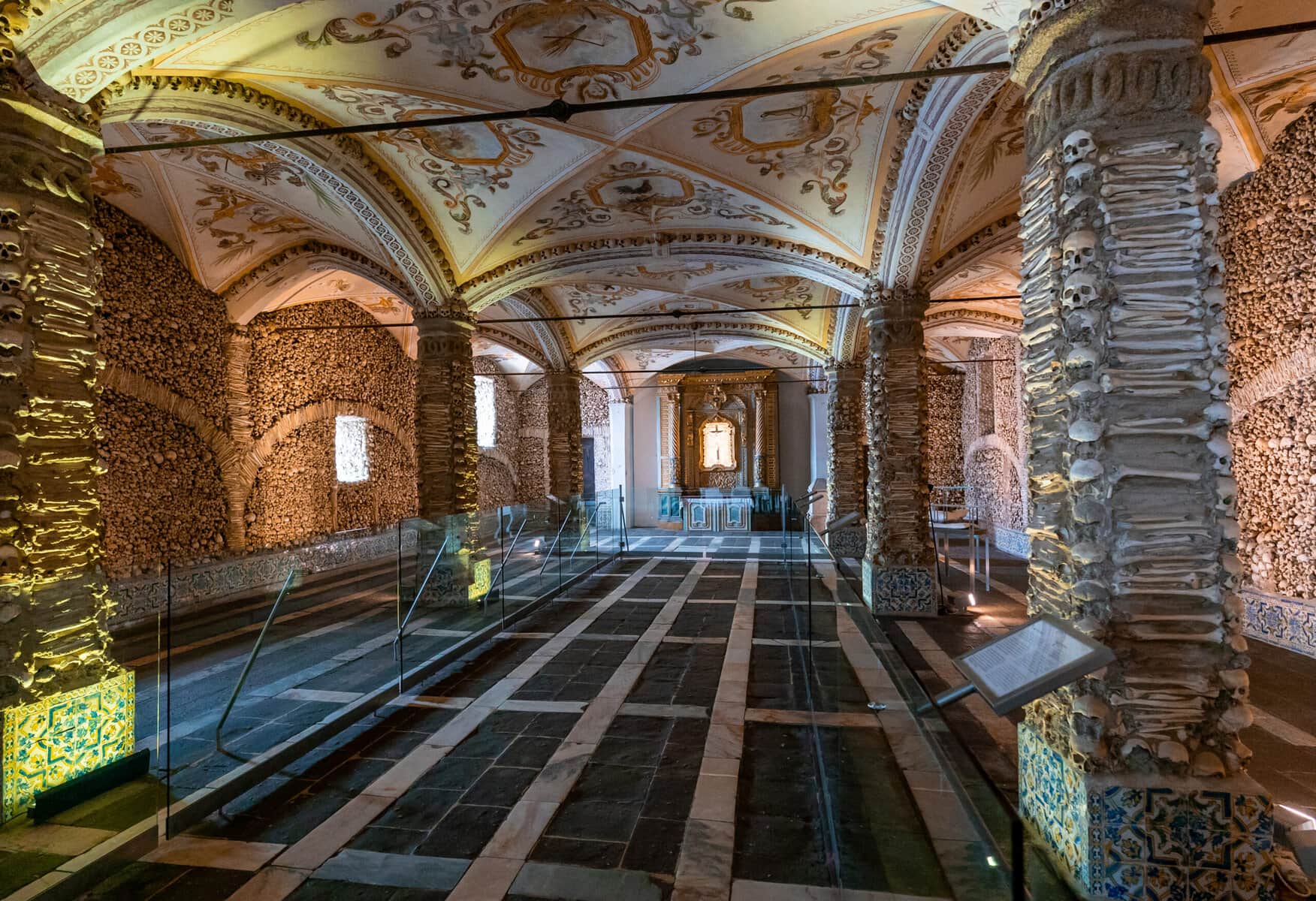
Exploring the Streets of Evora
One of the highlights of visiting Evora is exploring the charming streets of its historic center. The whitewashed houses with their yellow accents and red roofs create a picturesque and unique atmosphere. Wandering through the streets, visitors can discover hidden gems, quaint cafes, and boutique shops that add to the city’s charm.
Delving into Evora’s Cultural Heritage
Evora, a UNESCO World Heritage Site, is a city that boasts a rich cultural heritage steeped in history, architecture, art, and traditions. Its designation as a UNESCO site highlights the outstanding universal value of this remarkable location and the need to preserve its cultural heritage for future generations to appreciate and enjoy.
Immersing in History and Art
Evora offers numerous opportunities for visitors to delve into its cultural heritage through its museums, churches, and cultural events. The city’s museums provide insight into its past, exhibiting artifacts, artworks, and historical documents that tell the story of Evora’s evolution over the centuries.
One notable museum is the Museum of Evora, which houses a diverse collection that encompasses archaeology, fine arts, and decorative arts. It showcases the city’s history, from its Roman origins to its medieval and Renaissance periods.
Exploring Evora’s Architectural Marvels
Evora’s architectural heritage is a testament to its cultural richness. The city’s historic center is a marvel of Roman, medieval, and Renaissance architecture, with notable landmarks including the Roman Temple of Diana, the Gothic Cathedral of Evora, and the Church of São Francisco.
Each architectural wonder showcases unique characteristics and historical significance. The Roman Temple of Diana, dating back to the 1st century AD, stands as an impressive remnant of Roman presence in the city, while the Cathedral of Evora is a masterpiece of Gothic architecture.
| Landmark | Description |
|---|---|
| Roman Temple of Diana | Ancient Roman temple dating back to the 1st century AD, dedicated to the goddess Diana. |
| Gothic Cathedral of Evora | A stunning example of Gothic architecture, housing magnificent religious art and relics. |
| Church of São Francisco | Known for the iconic Chapel of Bones, adorned with human skulls and bones. |
Celebrating Cultural Traditions
Evora’s cultural heritage isn’t only visible in its historical sites and architecture. The city is also known for its vibrant cultural traditions, which are celebrated through various events and activities throughout the year.
One such tradition is the Festival dos Capuchos, where the streets come alive with music, dance, and traditional food. Visitors can experience the lively atmosphere and immerse themselves in the local culture during this annual celebration.
Preserving Evora’s Heritage for the Future
Preservation efforts are essential to maintain Evora’s cultural heritage. Local authorities and organizations work tirelessly to protect and restore historical buildings, monuments, and traditions, ensuring that future generations can continue to appreciate the unique charm of this UNESCO World Heritage Site.
Through sustainable tourism practices and initiatives, Evora aims to strike a balance between preserving its cultural heritage and welcoming visitors from around the world to experience its rich history and vibrant traditions.
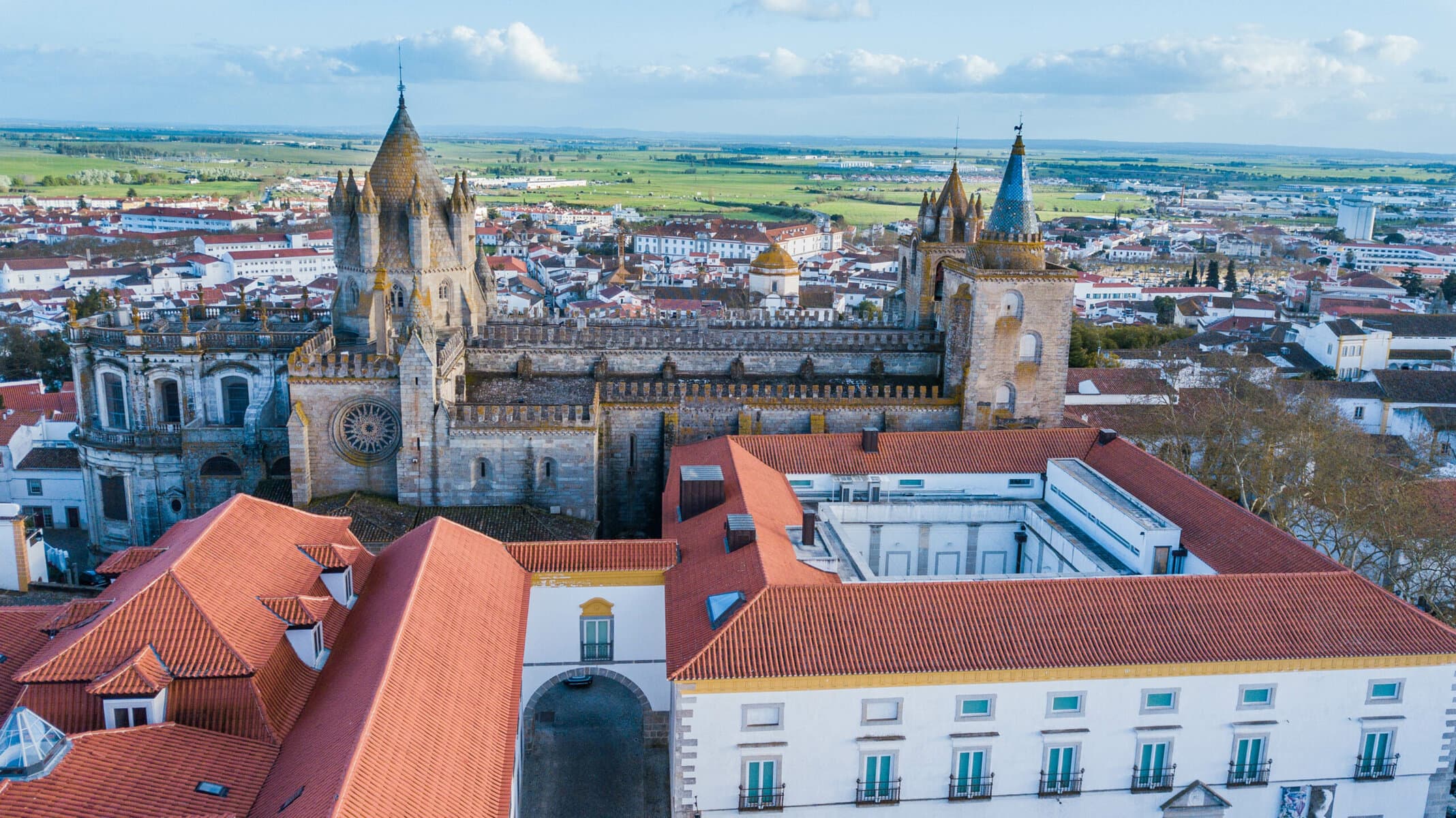
Day Trips from Evora
Evora serves as an excellent base for day trips to nearby attractions. Visitors can explore the fortified city of Elvas, which is designated as a UNESCO World Heritage Site. Elvas is known for its impressive fortifications, including the famous Amoreira Aqueduct. Exploring the city’s walls and military buildings offers a glimpse into its historical importance and architectural grandeur.
Elvas: UNESCO World Heritage Site
| Attraction | Description |
|---|---|
| Amoreira Aqueduct | Aqueduct with impressive arches that served as a vital water supply system. |
| Elvas Castle | A well-preserved medieval castle offering panoramic views of the city. |
| Fort Santa Luzia | A military fort with underground tunnels and a commanding position over the landscape. |
Another fantastic day trip option from Evora is the village of Monsaraz, known for its breathtaking views of the largest lake in Europe, Alqueva. This hilltop village offers a charming atmosphere and a chance to immerse oneself in the region’s traditional culture and heritage.
Monsaraz: Stunning Views of Alqueva Lake
| Attraction | Description |
|---|---|
| Monsaraz Castle | A medieval castle with panoramic views of the Alentejo region. |
| Church of Nossa Senhora da Lagoa | A beautiful church dating back to the 16th century. |
| Monsaraz Museum | A museum showcasing the history and folklore of the village and the surrounding area. |
These day trips from Evora offer a chance to explore more of the Alentejo region’s beauty, history, and cultural significance. Whether it’s uncovering the rich military past of Elvas or enjoying the breathtaking views of Alqueva Lake from Monsaraz, these excursions provide unique and memorable experiences for visitors.
The Mediterranean Diet in Alentejo
Alentejo, the region where Evora is located, is renowned for its traditional Mediterranean diet. Recognized by UNESCO as an Intangible Cultural Heritage of Humanity, this gastronomic treasure incorporates fresh, seasonal ingredients and promotes healthy eating habits. Visitors to Evora have the wonderful opportunity to indulge in the delicious Alentejo cuisine and experience the unique flavors of the Mediterranean diet.
| Key Elements of the Mediterranean Diet | Benefits |
|---|---|
| Abundance of fruits and vegetables | Packed with essential vitamins, minerals, and antioxidants |
| Healthy fats from olive oil, nuts, and fish | Promotes heart health and reduces the risk of chronic diseases |
| Emphasis on whole grains | Provides a good source of fiber and sustained energy |
| Lean proteins from fish, poultry, and legumes | Supports muscle growth and repair |
| Minimal consumption of processed foods and red meat | Reduces the risk of obesity and related illnesses |
| Moderate consumption of red wine | Contains antioxidants that benefit heart health |
The Mediterranean diet not only delights the palate but also contributes to overall well-being. Its healthful components are reflected in the low rates of cardiovascular diseases and longer life expectancy among Mediterranean populations. So why not savor the Mediterranean flavors during your visit to Evora and embrace a lifestyle that combines pleasure and nutrition?
Experience Cante Alentejano: Soulful Singing
Experience the soul-stirring melodies of Cante Alentejano, a traditional form of two-part singing that is deeply rooted in the cultural heritage of Alentejo. Designated as a UNESCO Intangible Cultural Heritage, Cante Alentejano showcases the region’s rural life, connection to nature, and vibrant traditional themes. Evora, with its rich artistic and cultural traditions, offers visitors the opportunity to witness live performances of Cante Alentejano and immerse themselves in the authentic culture of the region.
Discover the Authentic Sounds of Cante Alentejano
Cante Alentejano is a unique musical style characterized by its soulful harmonies and rhythmic chants. Originating from the Alentejo region of Portugal, it has been passed down through generations, captivating audiences with its heartfelt expressions of life’s joys, sorrows, and everyday experiences. The powerful vocals and poignant lyrics of Cante Alentejano transport listeners to a bygone era and resonate with the deep emotions of the local community.
Witness Live Performances in Evora
While exploring the captivating city of Evora, visitors have the opportunity to witness live performances of Cante Alentejano. Traditional choirs, known as “corais,” often gather in historic squares, cultural centers, and churches to share their passionate renditions of this unique musical tradition. The intimate and evocative atmosphere created by these performances allows visitors to truly connect with the essence of Alentejo’s cultural heritage.
Immerse Yourself in the Authentic Culture of Alentejo
Experiencing Cante Alentejano firsthand provides a window into the rich cultural tapestry of Alentejo. By participating in traditional singing workshops or attending concerts and festivals dedicated to this art form, visitors can deepen their understanding of Alentejo’s unique identity and its deep-rooted sense of community. The warm and welcoming nature of the local people enhances the overall experience, creating lasting memories of an enriching cultural journey.
Preserving and Promoting Alentejo’s Cultural Legacy
The designation of Cante Alentejano as a UNESCO Intangible Cultural Heritage highlights the importance of preserving and promoting this cherished form of expression. Local communities, cultural associations, and music schools in Alentejo are dedicated to safeguarding and passing on the tradition of Cante Alentejano to future generations. By supporting and attending performances, visitors not only contribute to the sustainability of this cultural legacy but also gain a deeper appreciation for the profound impact of music on the identity of a region.
Immerse yourself in the soulful melodies of Cante Alentejano and discover the cultural richness of Alentejo. Evora, with its vibrant artistic scene and deep-rooted traditions, invites you to experience the authentic beauty of this unique musical heritage.
Exploring the Craftsmanship of Estremoz Clay Figures
Estremoz, a town located in the Alentejo region of Portugal, is renowned for its exquisite craftsmanship of clay figures.
These clay figures are meticulously hand-molded and painted by skilled artisans, who have honed their craft over generations.
The figures depict a range of subjects, including traditional elements, professions, and religious iconography, offering a glimpse into Portugal’s rich cultural heritage.
What sets Estremoz clay figures apart is the level of detail and intricacy that goes into their creation.
A visit to Evora provides the opportunity to witness these remarkable works of art firsthand, as Estremoz is just a short distance away.
Upon arrival, visitors can explore workshops and galleries dedicated to showcasing the skill and creativity of the artisans.
Here, they can see the delicate molding process, observe the precise painting techniques, and gain a deeper appreciation for the artistry behind each figure.
The art of Estremoz clay figures has been recognized by UNESCO, earning its place on the Intangible Cultural Heritage list.
The Process of Creating Estremoz Clay Figures:
| Step | Description |
|---|---|
| Molding | The artisan starts by shaping the clay, either by hand or using molds, to create the desired figure. |
| Drying | The figure is left to dry naturally, allowing the clay to harden and stabilize. |
| Painting | Expertly applied paint brings the figure to life, with careful attention to detail and vibrant colors. |
| Finishing Touches | Additional elements, such as clothing, accessories, or decorative details, are added to enhance the figure’s appearance. |
| Final Firing | The figure is fired in a kiln, transforming the clay into a durable material that will last for generations. |
A visit to Evora is not complete without experiencing the artistry of Estremoz clay figures. These captivating creations showcase the talent and dedication of the artisans, preserving a centuries-old tradition that continues to thrive in the Alentejo region of Portugal.
Discover Elvas: A Fortress City of Historical Importance
Located near Evora, Elvas is a fortress city steeped in rich history. This remarkable city has earned the prestigious designation of being a UNESCO World Heritage Site, thanks to its impeccably preserved fortifications.
Elvas was strategically built to safeguard the border between Portugal and Spain, making it a vital stronghold in the region. Its impressive walls, military buildings, and iconic Amoreira Aqueduct stand as a testament to the city’s historical importance.
Visitors to Evora have the opportunity to embark on an enriching day trip to Elvas. Exploring this magnificent fortress city allows you to immerse yourself in its fascinating past and marvel at its architectural wonders.
Highlights of Elvas:
- Explore the formidable walls that protected the city from invaders for centuries.
- Discover the military buildings, such as Forte de Nossa Senhora da Graça, which offers spectacular panoramic views of the surrounding countryside.
- Admire the grandeur of the Amoreira Aqueduct, an engineering marvel that supplied water to the city.
- Visit the Elvas Cathedral, a magnificent example of Gothic architecture.
Elvas is a treasure trove of historical significance and architectural beauty. Its UNESCO World Heritage Site status ensures its preservation for future generations to appreciate and admire.
The Alcaçovas Cowbells: A Unique Cultural Tradition
The Alentejo region is known for its rich cultural traditions, and one unique tradition that stands out is the Alcaçovas Cowbells. These handmade iron rattles are an integral part of the region’s pastoral heritage, producing distinctive sounds that help shepherds locate their herds across the vast landscapes.
The craftsmanship of the Alcaçovas Cowbells is truly remarkable and has been recognized by UNESCO on the Intangible Cultural Heritage list. The process of creating these cowbells involves skilled artisans meticulously shaping and shaping iron to produce the perfect sound. Each bell is crafted with precision and care, ensuring its durability and functionality.
Visitors to Evora have the opportunity to witness the production process of the Alcaçovas Cowbells and learn more about this fascinating tradition. Local artisans welcome guests into their workshops, where they demonstrate the artistry and skill required to create these unique musical instruments. Visitors can observe the shaping, moulding, and tuning of the cowbells, gaining a deeper appreciation for the craftsmanship and cultural significance behind them.
Experiencing the Alcaçovas Cowbells is not only a chance to learn about a unique cultural tradition but also a way to connect with the authentic traditions of the Alentejo region. The distinct sounds of the cowbells and the stories shared by the artisans provide a glimpse into the rich history and heritage of Evora and its surrounding areas.
Make sure to include a visit to one of the workshops where Alcaçovas Cowbells are made during your Evora tourism experience. It’s an opportunity to discover the craftsmanship and cultural significance behind these unique cowbells that have become symbolic of the Alentejo region and its pastoral traditions.
Captivating Architecture in Evora’s Historic Center
Evora’s historic center is a treasure trove of captivating architecture. From Roman ruins to medieval churches, the city’s architectural heritage is awe-inspiring. The whitewashed houses, adorned with tiles and wrought iron balconies, showcase the unique style of the region. Visitors to Evora can admire the architectural beauty and craftsmanship that has influenced architectural styles in Brazil.
Architectural Highlights in Evora
- Roman Temple of Diana
- Evora Cathedral
- São Francisco Church and Chapel of Bones
- Graça Church
These iconic landmarks not only reflect Evora’s rich history but also exemplify the architectural ingenuity of the past. The Roman Temple of Diana, believed to have been built in the 1st century AD, is one of the best-preserved Roman structures on the Iberian Peninsula. Its elegant Corinthian columns stand as a testament to the grandeur of Roman architecture.
The Evora Cathedral, also known as the Cathedral of St. Mary, is a marvelous example of Gothic architecture. Its massive stone walls and ornate details impress visitors with their grandeur. Inside the cathedral, intricate carvings and beautiful stained glass windows create a serene and awe-inspiring atmosphere.
The São Francisco Church and Chapel of Bones provide a thought-provoking experience. The exterior of the church may be unassuming, but once inside, visitors are met with an eerie yet captivating sight. The chapel is adorned with human skulls and bones as a reminder of the transient nature of life. It is a stark and haunting depiction of mortality.
Lastly, the Graça Church, with its elegant façade and decorative tiles, showcases the distinctive Manueline style, a Portuguese variant of Late Gothic architecture. The intricate details, including sculpted figures and motifs, make it a true architectural gem.
The table below provides a comparison of these architectural highlights in Evora:
| Landmark | Architectural Style | Significance |
|---|---|---|
| Roman Temple of Diana | Roman | Best-preserved Roman structure on the Iberian Peninsula |
| Evora Cathedral | Gothic | Impressive example of medieval architecture and religious significance |
| São Francisco Church and Chapel of Bones | Manueline | Unique, thought-provoking depiction of mortality |
| Graça Church | Manueline | Exquisite details and decorative tiles showcasing the Manueline style |
Influence on Architectural Styles
The architectural beauty of Evora’s historic center has had a significant influence on architectural styles, not only within Portugal but also in other parts of the world. The intricate details, use of local materials, and harmonious blend of different architectural periods have inspired architects and designers.
In particular, the Manueline style, characterized by elaborate ornamentation and maritime motifs, can be seen in buildings across Brazil. This style was brought to Brazil by Portuguese explorers and settlers, who were influenced by the Manueline architecture they encountered in Evora and other Portuguese cities.
The architectural legacy of Evora continues to captivate and inspire visitors and professionals in the field. As a UNESCO World Heritage Site, it stands as a testament to the city’s rich architectural history and enduring influence.
Immerse Yourself in Evora’s Museums and Cultural Institutions
Evora, with its rich history and cultural heritage, is home to an array of museums and cultural institutions that provide visitors with a deeper understanding of the city’s vibrant past. These institutions offer a fascinating journey through art, history, and academic traditions, allowing tourists to immerse themselves in the cultural fabric of Evora.
The Museum of Evora
One of the city’s notable attractions is the Museum of Evora, which is housed in a former archbishop’s palace. This museum showcases a diverse collection of archaeological artifacts, religious art, and medieval sculptures. Visitors can explore the fascinating exhibits that highlight Evora’s unique cultural and historical significance.
The Eugénio de Almeida Foundation
The Eugénio de Almeida Foundation is a cultural institution that aims to preserve and promote the cultural heritage of Evora. It is located in the exquisite palace of the Counts of Basto and features a gallery of contemporary art, a library, and a wine museum. Visitors can delve into Evora’s artistic and vinicultural traditions through engaging exhibitions and events organized by the foundation.
The University of Evora’s Historic Buildings
The University of Evora, one of Portugal’s oldest universities, is housed in several historic buildings that showcase magnificent architectural features. These buildings, such as the Royal Palace and the São Jerónimo College, serve as important reminders of Evora’s academic legacy. Visitors can take a stroll through the university’s grounds and admire the grandeur of these centuries-old structures.
By immersing themselves in the museums and cultural institutions of Evora, tourists can gain a deeper appreciation for the city’s rich heritage while exploring its vibrant art scene, historical treasures, and academic traditions.
Enjoying the Natural Beauty of the Alentejo Region
Evora, located in the magnificent Alentejo region, is a gateway to the natural splendors that await visitors. Known for its breathtaking landscapes, rolling plains, and charming villages spread throughout the countryside, Alentejo offers a truly immersive experience in nature’s embrace. From the stunning views of Monsaraz to the sheer vastness of the largest lake in Europe, this region provides outdoor enthusiasts with endless opportunities to connect with the captivating beauty that Alentejo is renowned for.
Scenic Landscapes and Rolling Plains
- The Alqueva Lake: As the largest artificial lake in Europe, the Alqueva Lake mesmerizes visitors with its expansive turquoise waters and surrounding picturesque countryside. It’s a perfect spot for leisurely boat rides, fishing, or simply soaking in the serenity.
- Serra d’Ossa: Nature enthusiasts will appreciate the rolling hills and verdant landscapes of Serra d’Ossa. This natural haven invites visitors to enjoy hiking trails, breathing in the fresh air, and immersing themselves in the tranquility of nature.
Charming Villages and Picturesque Countryside
- Monsaraz: Situated on a hilltop, the medieval village of Monsaraz offers panoramic views of the Alentejo plains and the Alqueva Lake. Its narrow cobbled streets, whitewashed houses, and ancient castle create a timeless ambiance that transports visitors back in time.
- Marvao: Perched on a mountain ridge, Marvao captivates with its stunning views of the surrounding valleys and the Spanish border. Its medieval walls, fortified castle, and charming alleys make it a must-visit destination for history buffs and nature lovers alike.
Exploring the Alentejo region provides a refreshing escape from the hustle and bustle of daily life. Whether you’re hiking through the rolling plains, discovering the hidden gems of charming villages, or marveling at the breathtaking views, the natural beauty of Alentejo will leave an indelible impression on your heart.
Conclusion
Evora, located in Portugal, is a captivating destination that invites travelers to embrace its rich history, vibrant culture, and breathtaking natural beauty. As a designated UNESCO World Heritage Site, Evora offers an unparalleled experience for those seeking to immerse themselves in the charm of this historic city.
Visitors to Evora can wander through its well-preserved historic center, exploring fascinating landmarks such as the Roman Temple of Diana, the medieval Cathedral, and the Chapel of Bones. The city’s enchanting streets, with their whitewashed houses and charming cafes, create a picturesque atmosphere that transports visitors to another time.
But Evora is not just about its architectural wonders. It also delights the senses with its gastronomy and cultural traditions. From indulging in the flavors of the traditional Mediterranean diet to witnessing the soulful singing of Cante Alentejano, Evora offers a unique and immersive experience.
Whether exploring museums and cultural institutions, embarking on day trips to nearby attractions, or simply basking in the natural beauty of the Alentejo region, Evora promises an unforgettable adventure. With its blend of history, culture, and natural wonders, Evora beckons travelers to discover its hidden treasures and create cherished memories.
FAQ
What is the historical significance of Evora?
Evora is a historic city located in Portugal that has been designated as a UNESCO World Heritage Site. It is known for its rich cultural heritage and well-preserved historic center.
What are some must-see landmarks in Evora?
Some must-see landmarks in Evora include the Roman Temple of Diana, the medieval Cathedral, the Chapel of Bones in the São Francisco Church, and the Graça Church.
What can I discover while exploring the streets of Evora?
Exploring the streets of Evora allows you to discover hidden gems, quaint cafes, and boutique shops that add to the city’s charm.
What is Cante Alentejano?
Cante Alentejano is a traditional form of two-part singing that is an integral part of the cultural heritage of Alentejo. It reflects the region’s rural life, nature, and traditional themes.
What are Estremoz clay figures?
Estremoz clay figures are hand-molded and painted clay figures that depict traditional elements, professions, and religious iconography. They are a unique cultural tradition of the Alentejo region.
What can I explore in Elvas?
Elvas is a fortress city with a rich historical past. It is designated as a UNESCO World Heritage Site and offers well-preserved fortifications to explore, including impressive walls, military buildings, and the iconic Amoreira Aqueduct.
What is the Mediterranean Diet?
The Mediterranean Diet is a traditional diet recognized by UNESCO as an Intangible Cultural Heritage of Humanity. It incorporates fresh, seasonal ingredients and promotes healthy eating habits.
What are Alcaçovas Cowbells?
Alcaçovas Cowbells are handmade iron rattles that are a unique cultural tradition of the Alentejo region. They produce distinctive sounds to help shepherds locate their herds.
What can I explore in Evora’s historic center?
Evora’s historic center is a treasure trove of captivating architecture, including Roman ruins, medieval churches, and unique whitewashed houses with tiled roofs and wrought iron balconies.
What can I experience in Evora’s museums and cultural institutions?
In Evora’s museums and cultural institutions, you can immerse yourself in the city’s art, history, and academic traditions. Examples include the Museum of Evora, the Eugénio de Almeida Foundation, and the historic buildings of the University of Evora.
What natural beauty can I enjoy in the Alentejo region?
In the Alentejo region, you can explore scenic landscapes, rolling plains, and picturesque villages. Highlights include stunning views of Monsaraz and the largest lake in Europe.
Why should I visit Evora?
Evora offers a unique travel experience with its rich historical and cultural heritage, captivating architecture, traditional cuisine, and the opportunity to explore nearby attractions in the Alentejo region.
Discover more from Portugal Destinations
Subscribe to get the latest posts sent to your email.





